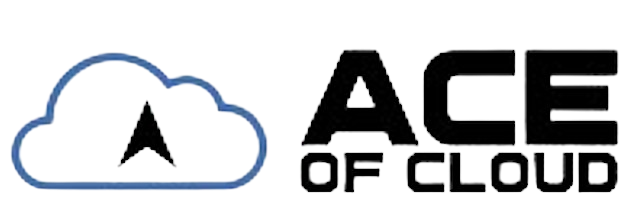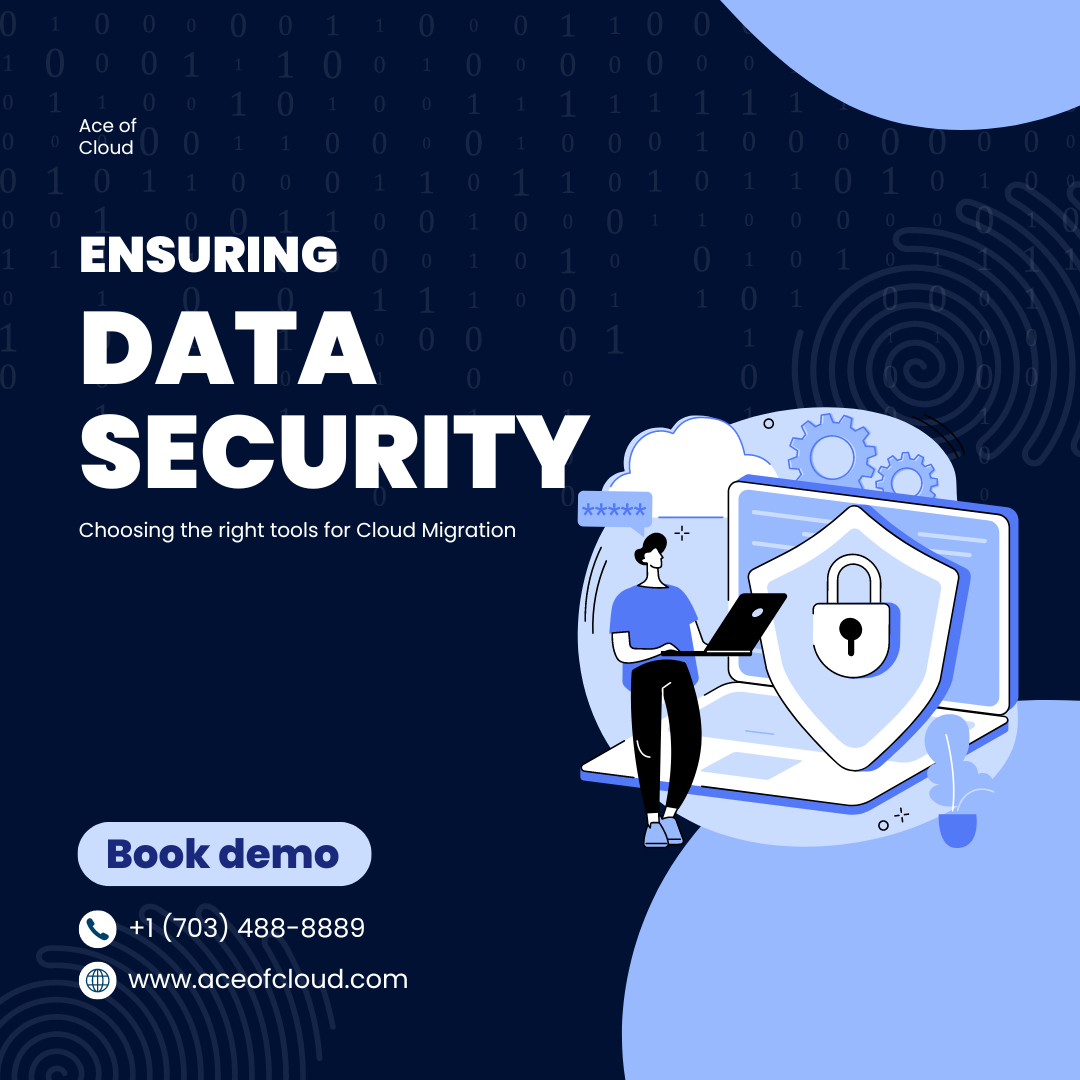Migrating your data to the cloud is a pivotal move for modern businesses, offering scalability, flexibility, and cost-efficiency. However, it also presents significant challenges, particularly in ensuring data security and selecting the appropriate tools and services for the migration process. Neglecting these aspects can lead to data breaches, compliance issues, and costly disruptions. In this blog, we’ll delve into two critical elements of a successful migration: safeguarding your data during the transition and choosing the best tools to facilitate the move.
Part 1: Ensuring Data Security During Migration 🔒
1. Encryption: Protecting Data at Every Stage
Encryption is the cornerstone of data security during migration. It involves encoding data in such a way that only authorized parties can access it, ensuring that even if data is intercepted, it remains unreadable.
Data at Rest:
Before starting the migration, ensure that all data stored on your current systems is encrypted. This prevents unauthorized access, even if physical drives or storage media are compromised.
Data in Transit:
As data is transferred to the cloud, it becomes vulnerable to interception. Use advanced encryption protocols, such as AES (Advanced Encryption Standard) with strong key management practices, to safeguard data as it moves from one location to another. This ensures that any intercepted data remains indecipherable.
2. Secure Transfer Protocols: Maintaining Data Integrity
Using secure transfer protocols is essential for protecting data during the migration process. Protocols like SSL (Secure Sockets Layer) and TLS (Transport Layer Security) create a secure channel for data transfer, preventing unauthorized access and tampering.
SSL/TLS Protocols:
These protocols ensure that the data sent over the internet is encrypted, safeguarding it from eavesdropping and man-in-the-middle attacks. Ensure that the tools and services you use for migration support these protocols to maintain data integrity.
Virtual Private Networks (VPNs):
For added security, consider using a VPN to create an encrypted connection between your on-premise infrastructure and the cloud environment, further protecting your data from unauthorized access during the transfer.
3. Access Controls: Restricting Data Access
Access controls are crucial in preventing unauthorized access to sensitive data during migration. Implementing strict access controls ensures that only authorized personnel can handle and view the data.
Role-Based Access Control (RBAC):
Use RBAC to limit access to data based on an employee’s role within the organization. This minimizes the risk of data being accessed by unauthorized individuals.
Multi-Factor Authentication (MFA):
Implement MFA for all accounts involved in the migration process. This adds an extra layer of security by requiring users to provide two or more verification factors to access data.
4. Compliance: Adhering to Regulatory Standards
Compliance with industry-specific regulations is non-negotiable during data migration. Failing to adhere to standards such as GDPR, HIPAA, or CCPA can result in severe penalties and damage to your organization’s reputation.
Data Residency:
Ensure that your migration strategy aligns with data residency requirements, which dictate where data must be stored based on jurisdictional laws.
Audit Trails:
Maintain comprehensive audit trails throughout the migration process. This ensures that you can demonstrate compliance and identify any unauthorized access or data breaches.
5. Risk Assessment and Security Plan: Preparing for the Unexpected
Before initiating the migration, conduct a thorough risk assessment to identify potential vulnerabilities. This assessment should inform a robust security plan that outlines the steps to mitigate identified risks.
Threat Modeling:
Identify potential threats to your data during migration, such as external attacks, internal threats, or system failures. Develop strategies to mitigate these risks.
Incident Response Plan:
Create an incident response plan that outlines the steps to take in the event of a security breach during migration. This plan should include communication protocols, data recovery procedures, and roles and responsibilities.
By adhering to these best practices, you can significantly reduce the risk of data breaches and ensure that your sensitive information remains secure throughout the migration process.
Part 2: Choosing the Right Data Migration Tools and Services 🛠️
The tools and services you choose for data migration play a critical role in determining the success of the entire process. Selecting the right ones can streamline the migration, minimize downtime, and ensure data integrity.
1. Review Features: Understanding Tool Capabilities
When evaluating migration tools, it’s essential to consider their features and how they align with your migration needs.
Automated Data Mapping:
Look for tools that offer automated data mapping to simplify the migration process. These tools can automatically map data fields from your existing system to the new cloud environment, reducing the risk of errors.
Real-Time Monitoring:
Real-time monitoring features allow you to track the migration process as it happens, providing visibility into potential issues and ensuring that the migration is progressing smoothly.
Error Detection and Handling:
Choose tools that include error detection and handling capabilities. This ensures that any issues encountered during the migration are quickly identified and addressed, minimizing the risk of data loss or corruption.
2. Assess Benefits: Evaluating Tool Advantages
Each tool offers different advantages, and it’s important to assess how these benefits align with your organization’s needs.
Ease of Use:
Consider tools that are user-friendly and require minimal training for your IT team. Tools with intuitive interfaces and clear documentation can significantly reduce the complexity of the migration process.
Speed and Efficiency:
Evaluate the speed at which the tool can perform the migration. Faster tools can reduce downtime and allow your business to resume normal operations more quickly.
Scalability:
Ensure that the tools you choose can scale with your organization’s growth. As your data needs expand, you’ll need tools that can handle larger volumes of data without compromising performance.
3. Suitability: Matching Tools to Migration Types
Different types of migrations require different tools. Consider the nature of your migration when selecting tools and services.
On-Premise to Cloud:
If you’re migrating data from on-premise systems to the cloud, look for tools specifically designed for this purpose. These tools often include features like data compression and deduplication to optimize the migration process.
Cloud-to-Cloud:
For cloud-to-cloud migrations, choose tools that offer seamless integration between different cloud platforms. This is particularly important if you’re moving data between public and private clouds or between different cloud service providers.
Hybrid Setup:
In a hybrid migration, where some data remains on-premise while other data moves to the cloud, select tools that can manage both environments simultaneously. This ensures a cohesive migration process and reduces the risk of data silos.
4. Vendor Reputation: Trusting Proven Providers
The reputation of the tool’s vendor is a critical factor in your decision-making process.
Track Record:
Choose tools from vendors with a proven track record in successful data migrations. Look for customer testimonials, case studies, and independent reviews to gauge the reliability of the tool.
Support and Updates:
Opt for vendors that offer robust customer support and regular updates. This ensures that you have access to assistance during the migration process and that the tool remains up-to-date with the latest security patches and features.
5. Cost: Balancing Investment and Value
While cost is always a consideration, it’s important to balance the price of the tool with the value it offers.
Total Cost of Ownership:
Consider the total cost of ownership, including licensing fees, implementation costs, and ongoing maintenance. Compare this against the potential savings in terms of time, reduced errors, and increased security.
ROI:
Evaluate the return on investment (ROI) that the tool offers. Sometimes, investing in a premium tool can save costs in the long run by reducing migration errors, minimizing downtime, and ensuring a smoother transition.
Selecting the right tools and services not only streamlines the migration process but also ensures that your data remains intact, secure, and readily accessible in the cloud.
Conclusion
Ensuring data security and selecting the right tools are two of the most critical components of a successful cloud migration. By following the best practices outlined in this blog, you can protect your sensitive data from threats and choose the tools that best fit your organization’s needs. With careful planning, your migration to the cloud can be a smooth, secure, and successful journey.

